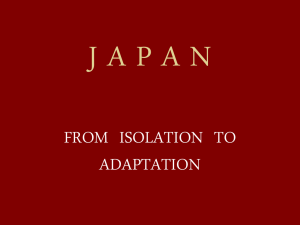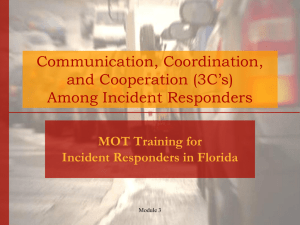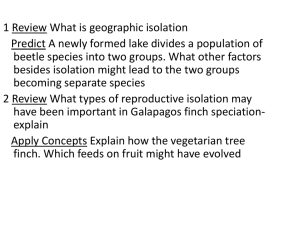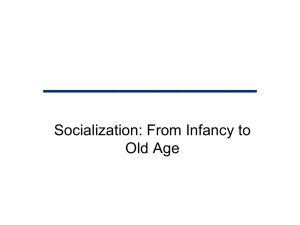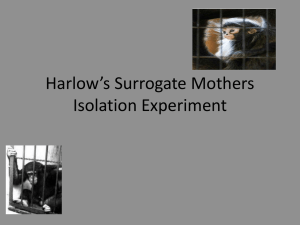Lesson 3 - Ashland City Fire Department
advertisement
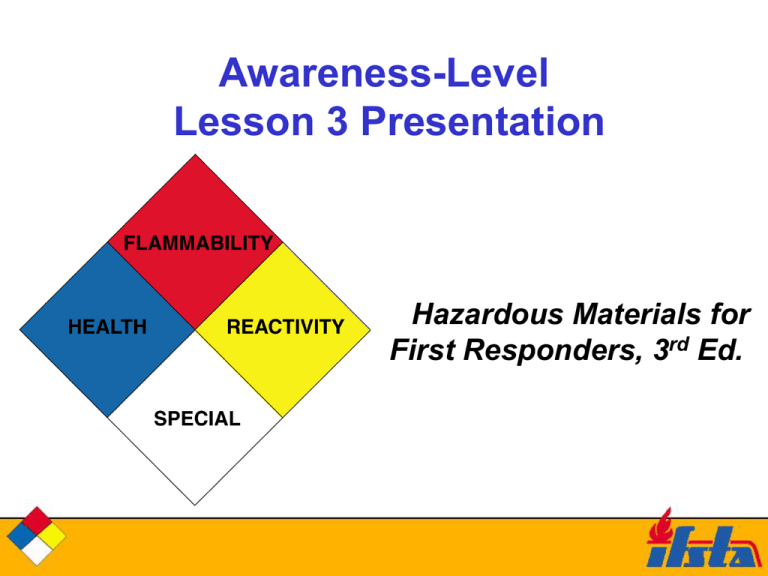
Awareness-Level Lesson 3 Presentation Hazardous Materials for First Responders, 3rd Ed. Incident Management Elements • Priorities – Life safety – Incident stabilization – Protection of property and the environment • Management structure – Command system – Predetermined procedures and guidelines (1 of 2) Awareness Level 3–2 Incident Management Elements • Problem-solving process – – – – Analyzing the incident Planning the response Implementing the response Evaluating the progress (2 of 2) Awareness Level 3–3 Advantages of an Incident Management System • • • • • • Common terminology Modular organization Integrated communication Unified command structure Consolidated action plans Manageable span of control Awareness Level 3–4 Functions of an IMS • • • • • Command Operations Planning Logistics Finance/Administration Awareness Level 3–5 Predetermined Procedures • Predetermined plans for emergencies that are known as standard operating procedures (SOPs), standard operating guidelines (SOGs), or operating instructions (OIs) – Standard set of actions – Must comply with local emergency response plan (LERP) procedures – Incorporate regulatory requirements – Written down and used Awareness Level 3–6 Benefits of Predetermined Procedures • Reduce chaos on the haz mat scene • Resources can be used in a coordinated effort • Establish accountability and increase command control and effectiveness • Lessen confusion about duties of personnel • Prevent duplication of effort and uncoordinated operations Awareness Level 3–7 Communications Equipment • Radio procedures – – – – Use simple English Transmit only essential information Use appropriate channels Use appropriate number of channels • Know what types of additional help are available, according to the LERP (1 of 2) Awareness Level 3–8 Communications Equipment • Emergency radio traffic – Make urgency clear – Follow telecommunicator directions • Evacuation signals – Broadcast radio message – Sound audible warning devices – Broadcast message several times (2 of 2) Awareness Level 3–9 External Communications • Facilitating communication between onsite and offsite personnel • Primary means are cell phone, telephone, radio • Other technologies may enable use of computers • SOPs may address communication with media and public Awareness Level 3–10 Internal Communications • Receiving and sharing information regarding the incident among emergency responders once they arrive on the scene – – – – Alerting team members to emergencies Passing along safety information Communicating changes in action plan Maintaining site control (1 of 2) Awareness Level 3–11 Internal Communications • Verbal communication can be impeded by background noise and PPE • Primary and backup systems of communication are recommended (2 of 2) Awareness Level 3–12 Internal Communication Devices • • • • • Radios Cell phones Pagers Noisemakers Visual signals Awareness Level 3–13 Isolation • One of the primary strategic goals at a haz mat incident and one of the most important means by which first responders can ensure the safety of themselves and others – Involves physically securing and maintaining the emergency scene (1 of 2) Awareness Level 3–14 Isolation • Physical control of the scene begins by isolating the site via an isolation perimeter – – – – Removing people who are within the perimeter Denying entry of unauthorized persons Determining isolation distance Establishing initial isolation zones and protective action zones (2 of 2) Awareness Level 3–15 Initial Isolation Distance • A distance within which all persons should be considered for evacuation in all directions from the actual spill/leak source, according to the Emergency Response Guidebook Awareness Level 3–16 Initial Isolation Zone • A circular zone (with a radius equivalent to the initial isolation distance) within which persons may be exposed to dangerous concentrations upwind of the source and may be exposed to life-threatening concentrations downwind of the source (1 of 2) Awareness Level 3–17 Initial Isolation Zone The smallest initial isolation distance for any chemical listed in the green-bordered pages of the ERG is 100 feet (30 m). (2 of 2) Awareness Level 3–18 Protective Action Zone • Area immediately adjacent to and downwind from the initial isolation zone. This area is in imminent danger of being contaminated by airborne vapors within 30 minutes of material release. (1 of 2) Awareness Level 3–19 Protective Action Zone Protective Action Zone 1/2 Downwind Distance Initial Isolation Zone 1/2 Downwind Distance Spill This area is in imminent danger of being contaminated by airborne vapors within 30 minutes of the release. (2 of 2) Awareness Level 3–20 Establishing the Initial Isolation Distance • Covered in the ERG Protective Action Distances section (green-bordered pages that apply to “highlighted” chemicals) • To use this information, the first responder must have already identified the material and looked it up either in the: – Yellow-bordered pages – Blue-bordered pages (1 of 2) Awareness Level 3–21 Establishing the Initial Isolation Distance • Orange-bordered pages in the ERG provide recommended isolation and evacuation distances for nonhighlighted chemicals (2 of 2) Awareness Level 3–22 Determining the Amount of Material • First responders must determine amount of material • Table of Isolation and Protective Action Distances gives parameters for establishing isolation and protective action distances which are based on whether the spill is small or large Awareness Level 3–23 Hazard Control Zones • Provide scene control – Protect responders from interference by unauthorized persons – Help regulate movement of first responders – Minimize contamination • Divide the levels of hazard of an incident – Hot zone – Warm zone – Cold zone (1 of 2) Awareness Level 3–24 Hazard Control Zones (2 of 2) Awareness Level 3–25 Hot Zone • An area surrounding an incident that has been contaminated or has the potential to become contaminated by a released material • Generally the same as the isolation distance and could include the protective action zone Awareness Level 3–26 Warm Zone • An area abutting the hot zone and extending to the cold zone • Considered safe for workers to enter without special protective clothing (until decontamination starts) unless they are assigned a task requiring increased protection • Used as a buffer between the hot and cold zones and the place to decontaminate personnel and equipment exiting the hot zone Awareness Level 3–27 Cold Zone • Encompasses the warm zone and is used to carry out all other support functions of the incident or haz mat operations • Workers in the cold zone are not required to wear personal protective clothing Awareness Level 3–28 Awareness-Level Notification • May be as simple as dialing 911 to report the incident and get additional help on the way • Fixed facility responders may have their own internal procedures to follow • Predetermined procedures should identify procedures for contacting appropriate authorities Awareness Level 3–29 Awareness-Level Rescue Actions • Because Awareness-Level responders should never come into contact with a hazardous material, they are essentially prohibited from physically touching or moving a victim who is either contaminated (or potentially contaminated) or located within the initial isolation zone, warm zone, or hot zone. (1 of 2) Awareness Level 3–30 Awareness-Level Rescue Actions • Direct people to an area of safe refuge or evacuation point • Instruct victims to move to an area that is less dangerous • Direct contaminated or potentially contaminated victims to specific areas such as a safe refuge area • Give directions for mass decontamination (2 of 2) Awareness Level 3–31 Protective Actions • Once the protective action zone has been determined, first responders must act to protect the health and safety of individuals – Evacuation – Shelter-in-place – A combination of both (1 of 2) Awareness Level 3–32 Protective Actions • Incident Commander selects best option based on: – Material considerations – Environmental conditions – Population at risk (2 of 2) Awareness Level 3–33 Evacuation • To move all people from a threatened area to a safer place • To perform an evacuation, there must be enough time: – To warn people – For them to get ready – For them to leave the area Awareness Level 3–34 Initiating Evacuation • Begin evacuating people who are nearby, downwind, or crosswind of the incident within the distance recommended by the ERG • Even after people move the recommended distances, they are not completely safe from harm (1 of 2) Awareness Level 3–35 Initiating Evacuation • Do not permit evacuees to congregate at these “safe” distances • Send them by a specific route to a designated place upwind/uphill/upstream of the incident (2 of 2) Awareness Level 3–36 Sheltering in Place • To direct people to go quickly inside a building and remain inside until the danger passes • Decision to shelter in place guided by the following factors: – – – – Population is unable to initiate evacuation Material is spreading too rapidly Material is too toxic to risk any exposure Vapors are heavier than air (1 of 2) Awareness Level 3–37 Sheltering in Place • When protecting people inside, direct them to: – Close all doors and windows – Shut off all HVAC systems • May not be the best option if: – Vapors or gases are explosive – It will take a long time for the vapors or gases to clear the area – Building cannot be closed tightly (2 of 2) Awareness Level 3–38 Summary • Incident management is an important factor when responding to hazardous materials incidents. An IMS provides a method for appropriately handling emergency responses. • Communications is vital in emergency response and first responders must know how to use communications equipment properly. (1 of 4) Awareness Level 3–39 Summary • One of the primary strategic goals at a haz mat incident is isolation. Isolation involves securing and maintaining the emergency scene. First responders should be familiar with isolation terms such as initial isolation distance, initial isolation zone, and protective action zone. • The ERG Protective Action Distances section provides information on establishing the initial isolation distance. (2 of 4) Awareness Level 3–40 Summary • Haz mat incidents are divided into three hazard control zones: hot, warm, and cold. These zones provide the rigid scene control needed at haz mat incidents. • Awareness-Level first responders are responsible for notification, which may be as simple as dialing 911. The role AwarenessLevel responders can take in rescue actions is limited to telling people what to do/or where to (3 of 4) go. Awareness Level 3–41 Summary • Protective actions are often necessary at haz mat incidents and include evacuation, sheltering-in-place, or a combination of both. The proper procedures and guidelines must be followed when conducting an evacuation or directing people to shelter-in-place. (4 of 4) Awareness Level 3–42 Awareness-Level Lesson 3 Presentation Hazardous Materials for First Responders, 3rd Ed.


